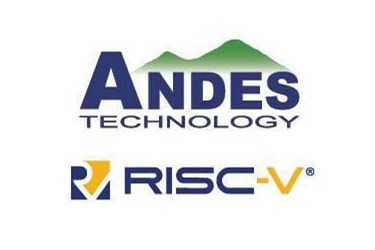Andes unveils new upgraded AndeSight IDE v5.0

Andes Technology has unveiled a new upgrade of AndeSight IDE v5.0, which looks to accelerate RISC-V AI and IoT developments by strengthening several key features.
Designed to address AI and IoT applications and the products serving these markets by offering a combination of high efficiency and low power consumption as well as reducing time-to-market, AndeSight IDE v5.0 rolls out a number of new functions delivering improved runtime performance and development efficiency.
The RISC-V DSP/SIMD extension (RVP), vector extensions (RVV), and the tools and runtime from AndeSight IDE RVP are intended to address the balance between low-volume data computation and power consumption.
By providing SIMD (Single Instruction Multiple Data) and DSP (Digital signal processing) capability, AndesSight forms a basis for the TinyML, AIoT, and signal processing applications on edge and endpoints. The RVV targets high-volume data computation and provides scalable, efficient, and powerful compute capabilities for general AI, NN, and data processing applications.
AndeSight IDE v5.0 supports toolchains for the standard-bound specification of RVP and RVV, highly-optimised DSP and Vector libraries, intrinsic functions, and sample codes to guide code optimisation. A key advantage for software developers is that they can build applications completely in C using efficient intrinsic and optimised libraries APIs, freeing them from writing error-prone assembly code, and matching the performance of the same applications built with hand-code assembly.
Andes provides the “Andes NN Library” that dramatically speeds up the development of Neural Network algorithms. It achieves a 66x speedup of MobileNet-v1 with half-precision floating-point, 256-bit SIMD width, and 512-bit vector length over RISC-V baseline extension. Moreover, “TensorFlow Lite for Microcontroller” can execute all built-in NN models with Andes NN Library on development boards.
AndeSight IDE v5.0 supports Linux LTS (Long-Term Support) kernel v5.4, and the popular RTOS such as FreeRTOS and Zephyr. Andes Linux kernel has verified with LTP (Linux Test Project), and seamlessly booted with Fedora or Debian Linux distro on Andes development boards along with the device drivers.
To provide a smaller image for embedded Linux applications, Andes also offers RISC-V 32-bit Linux kernel to run on the corresponding Andes processors. Andes FreeRTOS port has passed the “AWS Qualification Program for RTOS”, which validates the pre-integrated port on microcontroller-based boards by AWS (Amazon Web Service). Andes Zephyr port supports SMP (Symmetric Multi-Processing) and has been verified on Andes RISC-V multicore. Developers only need to focus on the application itself and do not need to worry about the fundamental software.
To further enhance debugging efficiency, the versatile features of scripting and grouping are enabled by AndeSight IDE. AndeSight scripting can record the UI operations from one developer, and replay on another environment.
Similar to GDB Python scripts feature, users can automate and scale the debugging procedures with Python programming. “Core Grouping” is a useful feature to allow users to develop the multicore software with separate build and debug configurations, and sending debug commands to a specific set of cores at the same time.
“AndeSight IDE v5.0 is the new milestone of our RISC-V software solutions. It is the latest Andes offering for RISC-V community, and we expect it to speed up RISC-V SoC development to a new level.” said Andes President and CTO Dr. Charlie Su. “Comprehensively optimised tools and runtime are the other sides of a coin. Processors cannot work efficiently and perform outstandingly without matching software solutions. We’ll continue to invest in our RISC-V software solutions to bring the best performance for RISC-V processor solutions to the RISC-V community.”